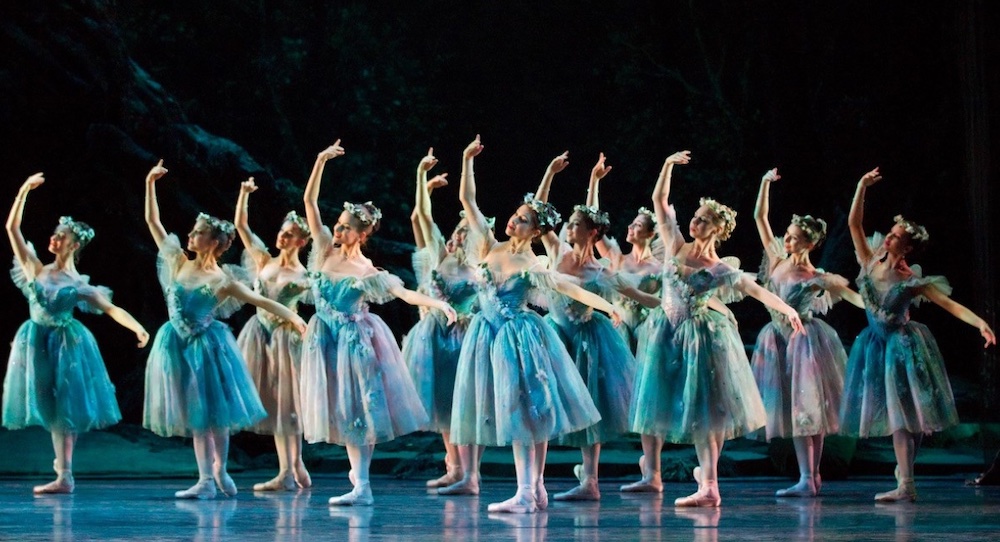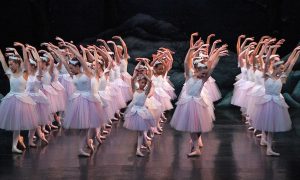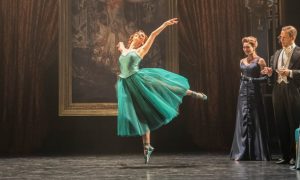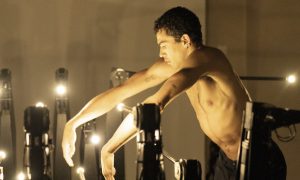The Royal Ballet School recently welcomed Jeanetta Laurence OBE, Chair of the Frederick Ashton Foundation, to the School to talk about the Foundation’s new partnership with their Affiliate Training and Assessment Programme (ATAP).
Launching this year, ATAP students will have the unique opportunity to study Ashton repertoire as part of Levels 4-6, with an enhanced stream for young dancers considering a career in the dance industry.
The Royal Ballet School have shared their conversation with Laurence about this exciting new partnership and the repertoire that will be featured in the new ATAP levels with Dance Informa.
What excites you about this partnership?
“All of us at the Foundation are extremely happy that, through this new and groundbreaking partnership with The Royal Ballet School’s Affiliate Programme, teachers and pupils can now experience and enjoy teaching and dancing the ballets of Frederick Ashton, the Founder Choreographer of The Royal Ballet.
Students training with Affiliate teachers will now, for the first time, have the opportunity to dance repertoire from selected Ashton ballets. This repertoire has been carefully chosen and adapted exclusively for the Affiliate programme’s Levels 4-6 by the Foundation’s repetiteurs. All of the repetiteurs have been dancers with the Royal Ballet and Birmingham Royal Ballet and have performed many Ashton ballets throughout their careers.”
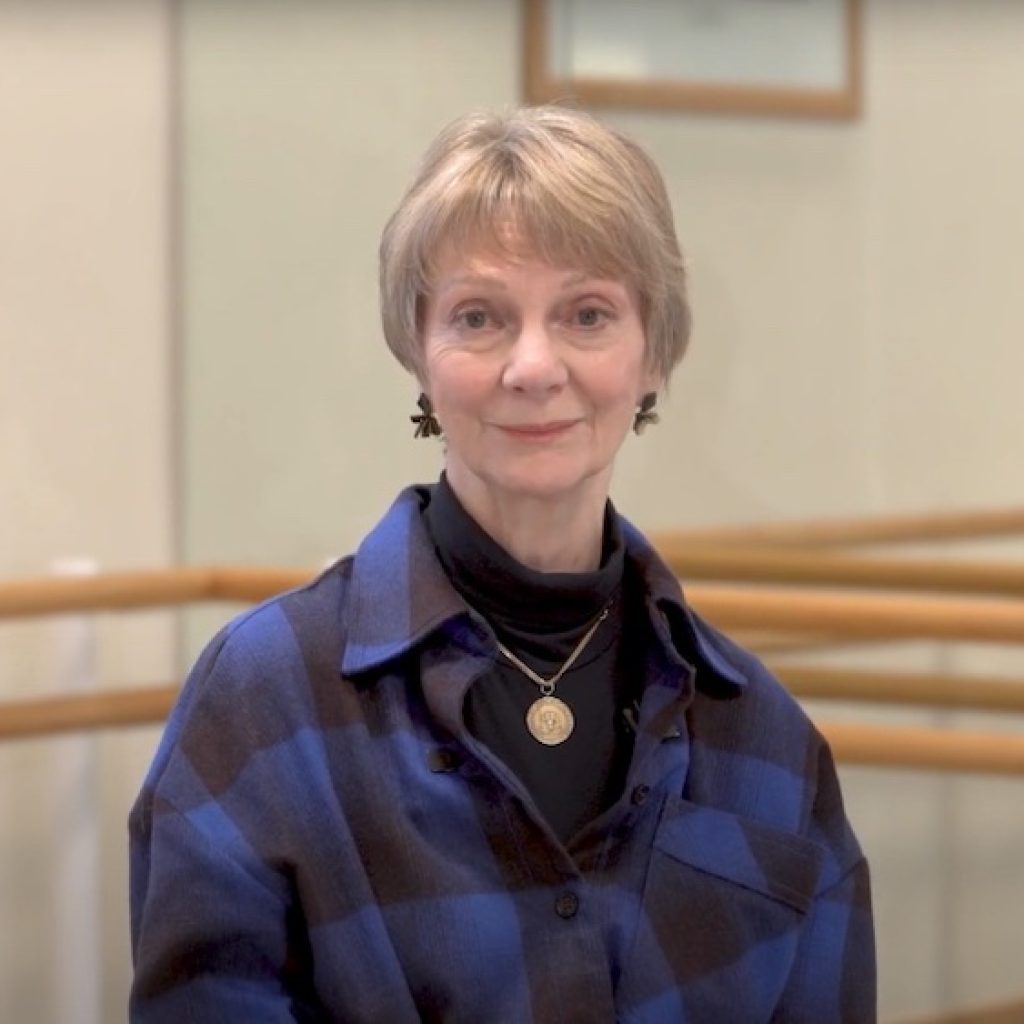
How would you describe Frederick Ashton’s choreographic style?
“Charm, wit and passion, lyrical movement in the upper body combined with fast footwork and an innate sense of musicality, are all Ashton traits. These elements, based on the classical form and balletic tradition, are the essence of the Ashton style.”
What are the benefits for students in learning Ashton repertoire?
“We’ve seen how much the young people who were involved in learning and filming the repertoire for the Affiliate programme teaching resources gained in a short period of time. They all absorbed insight, understanding and skill which gave them a much greater feeling of inhabiting and ‘owning’ their variations. It’s exciting to think of all the other students and teachers who will now be able to enjoy the same experience.”
What is the history of The Royal Ballet School’s relationship with the Frederick Ashton Foundation?
“Today, British ballet is both popular and influential, but it wasn’t until the 1920s that two remarkable women, Marie Rambert and Ninette de Valois, started staging British ballets. From her small choreographic academy, de Valois went on to create what is today The Royal Ballet. She based her repertoire on the great 19th century classics, but she also wanted to create home grown works that would give her company its own distinctive style. She chose Frederick Ashton to be her resident choreographer. Ashton went on to become a giant of 20th century choreography and was recognized as having established the style of British ballet. His genius of distilling a story or capturing the essence of a mood in the huge range of works that he created over more than 50 years, was pitch perfect.”
Which Ashton ballets will our ATAP teachers and students have access to in the programme?
“Levels 4 and 5 will focus on two of Ashton’s earliest works, Les Rendezvous and Les Patineurs respectively. Level 6 will study The Dream.”
Can you tell us a little more about each of these ballets?
“Ashton created Les Rendezvous in 1933, and in this joyful, lighthearted ballet, young people meet and enjoy each other’s company in a park. The variations we’ve chosen were created for its two leading dancers, Alicia Markova and Stanislas Idzikowski. In The Royal Ballet’s latest production, staged for the first time in 2024, these roles were performed by Principal dancers Marianela Nuñez and Reece Clarke.
Ashton choreographed Les Patineurs, a companion piece to Les Rendezvous, four years later in 1937, setting new technical challenges for his dancers. In the ballet, a group of skaters meet early one evening to practice their skills on the ice of a frozen lake lit by Chinese lanterns. The Blue Skater is full of confidence and in his solo, he shows off his tricks with great panache. The second variation is adapted from a duet for the two Red Skaters. Good friends, they happily enjoy themselves, even after taking a rather unsettling tumble on the ice!
The Dream was created by Ashton in 1964, to celebrate the 400th anniversary of Shakespeare’s birthday. Ashton based his ballet on Shakespeare’s play, A Midsummer Night’s Dream, set in a woodland glade deep in a forest inhabited by fairy folk. We’re focusing on two characters from the story; one of the magical fairies and Puck, a mischievous and impish sprite who thinks he’s pretty clever until he gets two of the humans in the story muddled up – with tricky consequences.”
What skills are required to dance these ballets?
“Classical ballet requires a sound technique, the rock on which all good dancers depend and what doing class regularly instils into every dancer. But a really good dancer needs other important things in their tool kit; musicality – which means really listening to the music and the mood it creates, and theatricality – and that means getting to really know every detail about the character you’re dancing and inhabiting it or if there’s no story attached to the ballet, thinking about and feeling the mood of what you’re dancing.
I hope you all enjoy this opportunity to find out lots more about Frederick Ashton and his ballets and most of all, of course, to really enjoy teaching and dancing them.”
Applications are now open for the Affiliate Training and Assessment Programme (ATAP)
Launched in 2022, ATAP provides a training model that differs from traditional examination syllabi. The programme consists of six training levels for dancers aged five and upwards, each emphasising the importance of developing classical ballet technique and performance skills alongside an understanding of the art form through repertoire, choreography, and appreciation.
The Affiliate programme for teachers is delivered via intensive in-person training, virtual webinars and extensive video content distributed via a video-on-demand platform. Teachers are then accredited to deliver the programme to students in their own dance schools.
In 2025, The Royal Ballet School will be running the Affiliate Training and Assessment Programme one-week in-person courses in London and Hong Kong across August.
Learn more about the Affiliate Training and Assessment Programme (ATAP) at the upcoming Q&As and Insight workshops.
The Frederick Ashton Foundation
The Frederick Ashton Foundation was established in 2011, as a charitable limited company working in close association with, but independent of, The Royal Ballet and Birmingham Royal Ballet. The Foundation strives to enrich the legacy of Frederick Ashton and his ballets through the ownership or management of the majority of the ballets and divertissement comprising the Ashton catalogue, and through a number of initiatives and projects, including a shadowing scheme, masterclasses and events.
Originally published for The Royal Ballet School. Author Bridget Clark. Republished with permission.


